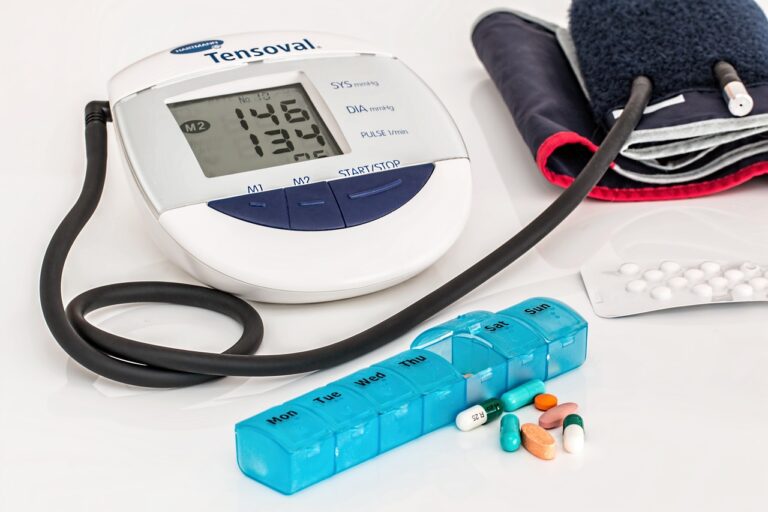The Power of Data: Leveraging a Tool Tracking System for Managing Blood Glucose Levels
In today’s tech-savvy world, data is king. From social media trends to health metrics, our lives revolve around data. One area where data proves particularly powerful is in managing blood glucose levels. For those living with diabetes, maintaining stable blood glucose is crucial. That’s where a tool tracking system comes in handy.
Let’s explore how leveraging such a system can transform managing blood glucose levels. Keep on reading!
Understanding Blood Glucose Levels
Blood glucose, or blood sugar, is the main sugar found in your blood. It comes from the food you eat and is your body’s main source of energy. For people with diabetes, managing blood glucose levels is a daily task. Too high or too low levels can lead to serious health issues.
What is a Tool Tracking System?
A tool tracking system is a digital platform that helps you keep track of various tools and data points related to your health. In the context of diabetes, it means monitoring your blood glucose levels, insulin doses, meals, physical activity, and more.
Benefits of Using a Tool Tracking System
Managing blood sugar levels is a constant for people who are dealing with diabetes. Being able to get some assistance from tools with diabetes management technology can offer a lot of convenience for these people. Here are some of the benefits that you need to know in using a tool tracking system:
Consistent Monitoring
One of the biggest benefits of using a tool tracking system is consistent monitoring. Manual tracking can be tedious and prone to errors. A digital system ensures you log your data accurately and consistently.
Real-time Data
With a tool tracking system, you get real-time data. Instant updates mean you can make informed decisions on managing your blood glucose levels. If your levels are too high or too low, you can take immediate action.
Comprehensive Overview
A tool tracking system provides a comprehensive overview of your health. It compiles data from different aspects of your life, such as diet, exercise, and medication. This holistic view helps you understand how different factors affect your blood glucose levels.
Personalized Insights
These systems often come with analytics features. They can analyze your data to provide personalized insights. For example, you might learn that your blood glucose spikes after certain meals. Such insights can help you make better lifestyle choices.
Easy Communication with Healthcare Providers
Sharing your data with healthcare providers becomes easier with a tool tracking system. Instead of carrying paper logs, you can share digital reports. This makes consultations more efficient and productive.
Goal Setting and Progress Tracking
Setting goals is crucial in managing diabetes. A tool tracking system allows you to set and track your progress toward these goals. Whether it’s maintaining a certain blood glucose range or reducing your HbA1c levels, the system helps you stay on track.
How to Implement a Tool Tracking System
Proper implementation is essential in order to fully utilize what a tool tracking system is able to offer. Here are some factors that you need to consider in regard to using a tool tracking system and make sure that you can get the results you need.
Choose the Right System
There are various tool tracking systems available. Choose one that fits your needs. Look for features like easy data entry, real-time updates, and comprehensive analytics.
Sync Your Devices
Most modern tool tracking systems can sync with other devices like glucose monitors, smartwatches, and fitness trackers. Syncing all your devices ensures you capture accurate and comprehensive data.
Log Your Data Regularly
Consistency is key. Make it a habit to log your data regularly. Set reminders if needed. The more consistent you are, the more accurate your insights will be.
Review Your Data
Take time to review your data regularly. Look for patterns and trends. Use the insights to make informed decisions about your diet, exercise, and medication.
Share with Your Healthcare Provider
Keep your healthcare provider in the loop. Share your data with them regularly. Their professional insights combined with your data can lead to better management of your blood glucose levels.
Real-life Success Stories
You would surely want to know how a tool tracking system can help in managing blood sugar levels. These examples of real-life stories can give you some insights into the success that these real-time glucose monitoring devices can offer:
Emma’s Journey
Emma, a 45-year-old teacher, struggled to manage her blood glucose levels. Despite her best efforts, her levels were erratic. Her doctor suggested using a tool tracking system. Within months, Emma noticed significant improvements. The system helped her identify that stress and late-night snacks were causing spikes in her levels. With this information, she made lifestyle changes that led to more stable blood glucose levels.
John’s Transformation
John, a 30-year-old software engineer, was diagnosed with diabetes last year. He found it overwhelming to keep track of everything manually. After switching to a tool tracking system, John felt more in control. The system’s real-time updates and personalized insights made a huge difference. Today, John maintains his blood glucose levels within the recommended range.
The Future of Blood Glucose Management
The future of blood glucose management looks promising with advancements in technology. Tool tracking systems will continue to evolve, offering even more sophisticated features.
Integration with artificial intelligence (AI) could provide predictive insights, helping individuals take proactive measures. Wearable devices will become more advanced, offering seamless data capture and real-time monitoring.
We must gain more knowledge regarding glucose monitors that can continuously provide us with some assistance in order to live a comfortable life. If you want to learn more about continuous glucose monitor, make sure to get in touch with an expert.
Utilizing Technology to Manage Your Blood Glucose Levels
Managing blood glucose levels can be challenging, but a tool tracking system can make it easier. From offering real-time data to providing personalized insights, these systems are invaluable. If you’re looking to take control of your diabetes management, consider implementing a tool tracking system. It could be the game-changer you need.
Have this article helped you out? If you’re looking for more similar topics, check out the rest of our blog!



